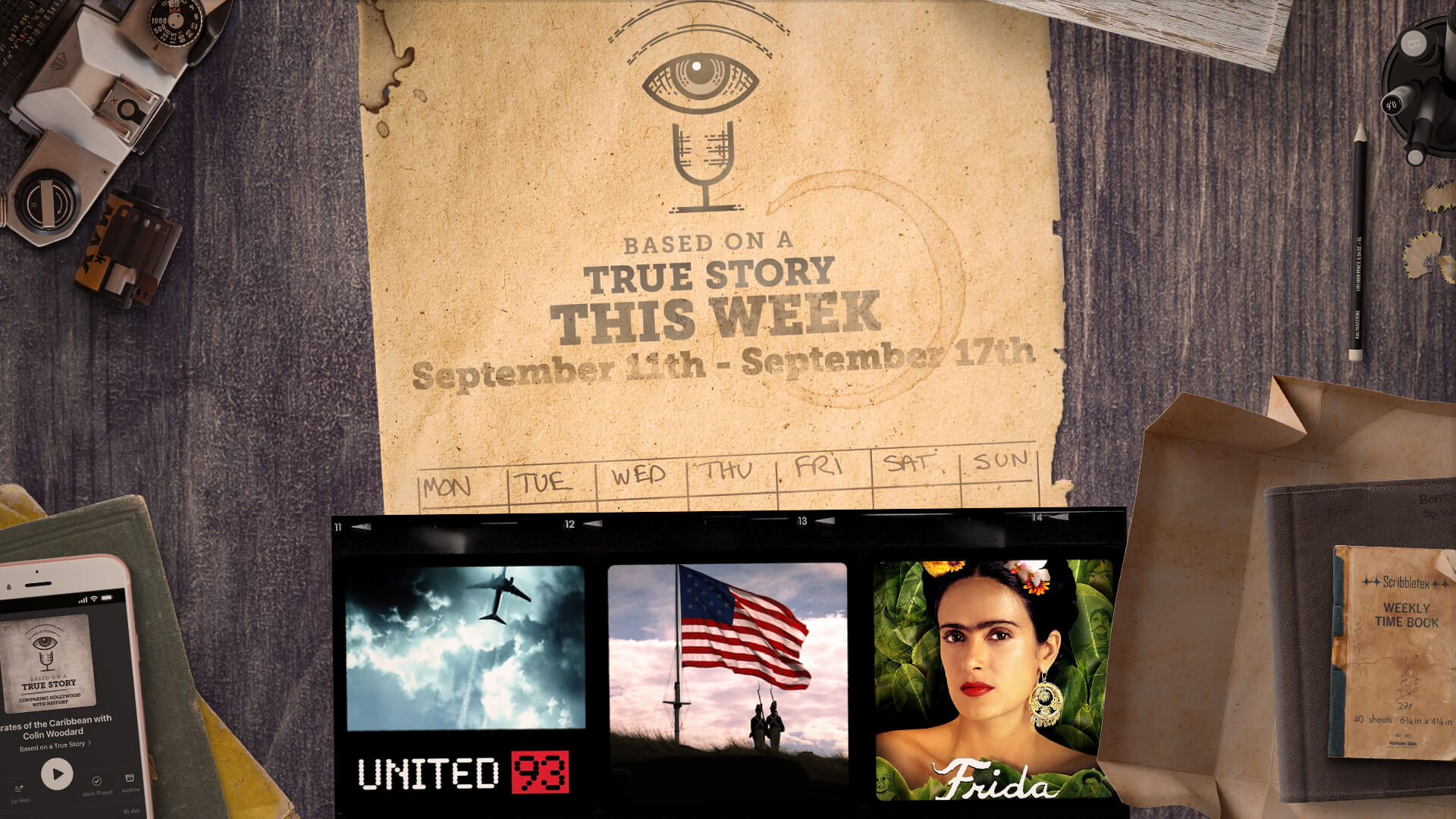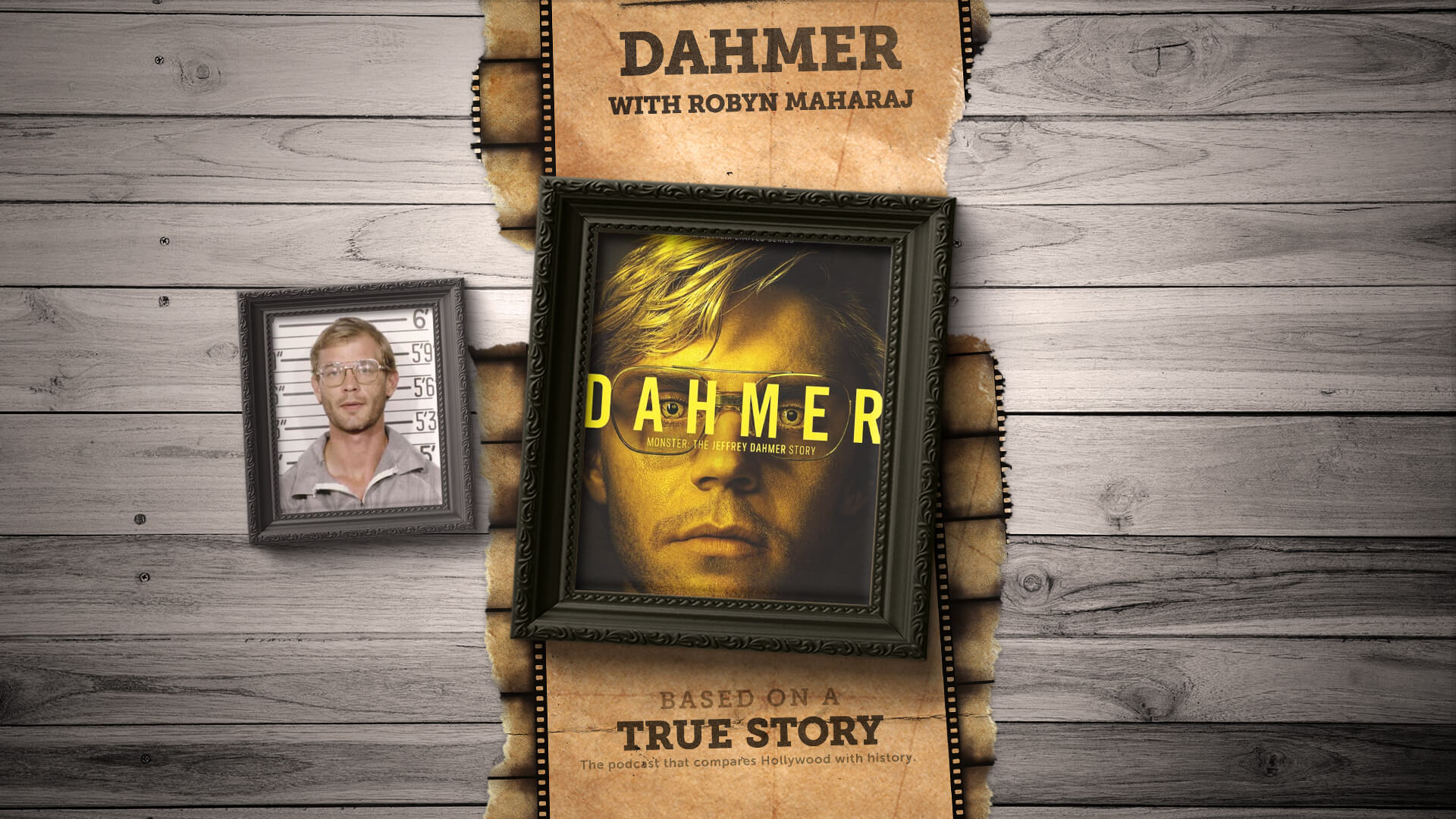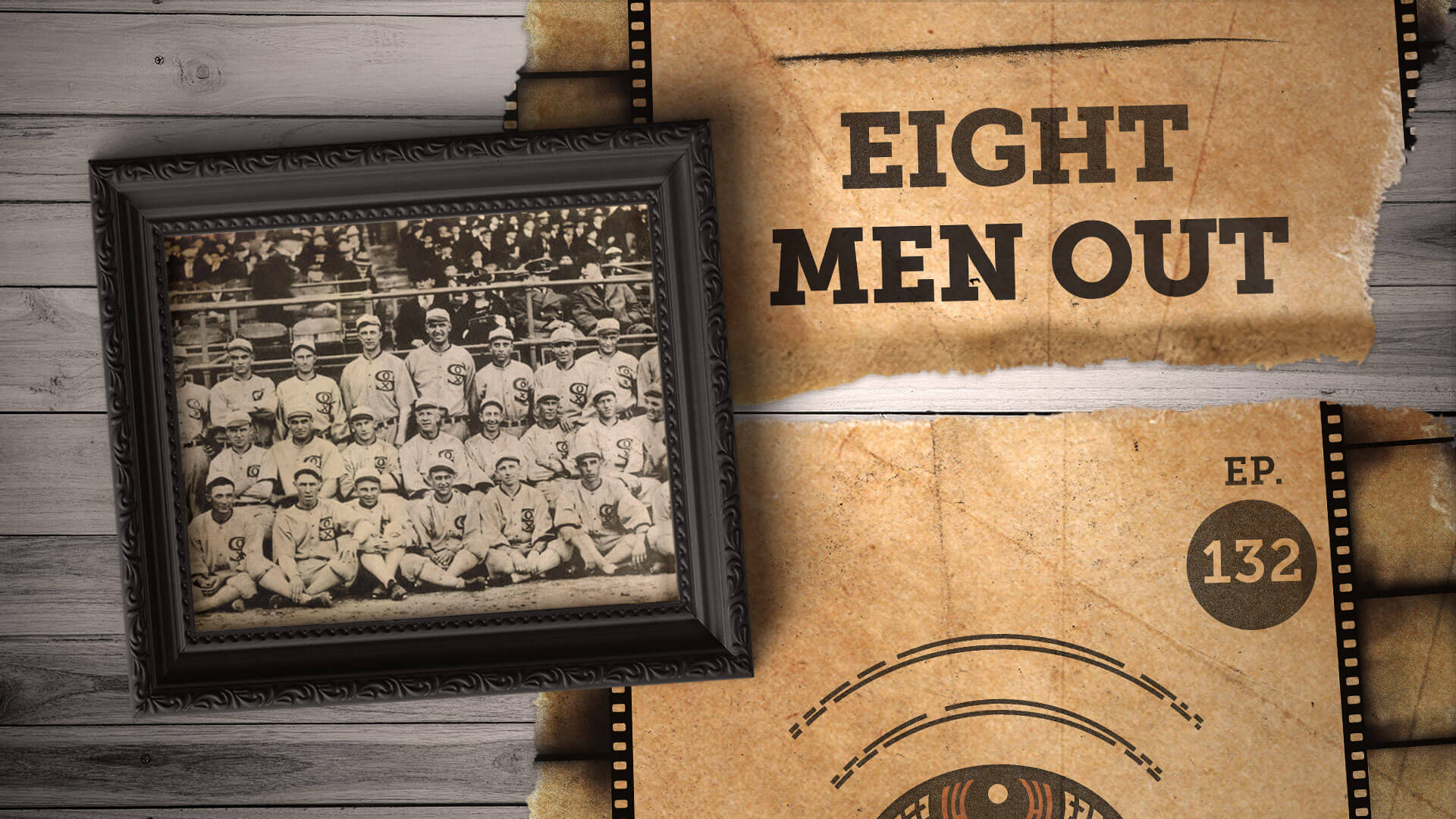For the week between January 9th to January 15th, we’ll be learning about historical events that were depicted in Netflix’s Roman Empire, Walk the Line and Sully.
Did you enjoy this episode? Help support the next one!
Disclaimer: Dan LeFebvre and/or Based on a True Story may earn commissions from qualifying purchases through our links on this page.
Transcript
Note: This transcript is automatically generated. There will be mistakes, so please don’t use them for quotes. It is provided for reference use to find things better in the audio.
January 10th, 49 BCE. Italy.
Sun streams through the trees, casting rays of light on the lush, green grass below. The sounds of rushing water can be heard. A lone man can be seen wearing the military uniform of the Roman Empire.
Walking with heavy steps, he makes his way to the edge of the river. He slows to a stop, looking at the water with a concerned look on his face.
The river is a small one and not deep enough to cover the numerous rocks that can be seen poking up out of the water. It’s the kind of small river or stream you can easily cross on foot.
But he doesn’t cross it. Instead, he paces up and down the river with that same concerned look on his face as he stares at the water. As he nears the camera, we see him clenching his jaw as the gears turn inside his mind.
In the next shot, we see a line of Roman soldiers. Most of them are on foot, although there are some cavalry there as well. In the foreground is the river. The soldiers aren’t moving, they’re just standing there in front of the river .
The man from earlier is on a horse now. He looks back at the soldiers. Then, slowly, he coaxes his horse forward to cross the river.
The soldiers fall in behind their leader, crossing the river as well.
This was from the Netflix miniseries simply called Roman Empire and what it’s depicting really did happen. The man leading his army across the river is Julius Caesar, who is played by Ditch Davey in the series.
The name of the river is the Rubicon and while it’s true that it wasn’t a physically difficult river to cross as far as the terrain is concerned, it was a huge deal for Caesar to cross the river with his army.
You see, the Rubicon River was the border between Rome and Gaul.
As a little side note, Gaul was a region in Western Europe that covered lands in modern-day France, Switzerland, Belgium, Luxembourg, Germany and some parts of Italy.
For a few years prior to the event that happened this week in history, Caesar had been conquering Gaul for the Romans—something that earned him a lot of fame in Rome. It also earned him some enemies, who didn’t like how popular Caesar was getting. One of them, in particular, was Pompey, who convinced the Roman Senate to order Caesar to return to Rome where they wanted him to resign his post.
There’s some debate over exactly what the Senate wanted to do to Caesar because their plans never came to fruition.
Caesar did return to Rome, but the reason crossing the Rubicon River with his army was such a big deal was because it meant Caesar was entering Roman lands at the head of his army. According to Roman law, only elected magistrates could lead their armies in Roman territory.
Breaking this law would immediately brand both the leader and the soldiers as outlaws and condemn them to death. So, normally, a Roman general would disband their army before entering Roman lands.
When Caesar crossed the Rubicon at the head of his army, he was basically declaring war on Rome. It was a point of no return. This act is seen as the start of a civil war that ended up with Pompey fleeing Rome and Julius Caesar as dictator of Rome.
Probably the biggest thing to mention about the accuracy of how the series depicts the crossing of the Rubicon is to simply point out that we just don’t know a lot about what the actual event looked like.
For example, I know I started this segment by saying it happened on January 10th, but we don’t even know that for sure…most historians say it probably happened on the night of January 10th or early morning hours of January 11th. That’s more of an educated guess than a known fact though.
If you want to watch the event this week, check out season 2, episode 3 of Netflix’s docudrama series simply called Roman Empire. Crossing the river itself is at about the 20-minute mark, although the entire episode is called Crossing the Rubicon and does a great job of setting up the event.
January 13th, 1968. Folsom, California.
We’re at a prison.
As the camera shows us different locations around the prison, we can see there are uniformed guards but no prisoners in sight.
Even inside the prison, we can see empty cells. No prisoners. The muffled sound of music can be heard throughout the halls of the prison. That’s odd.
Then we can see it.
All the prisoners are in a single room, cheering, clapping and stomping their feet to the beat. The musicians on stage are playing the same riff over and over.
As the musicians are playing, the guitarist looks rather nervously at a door behind the stage. Behind the door, Joaquin Phoenix’s version of Johnny Cash seems deep in thought.
After this, the movie jumps to Arkansas in 1944…but later in the movie we see more of the same event, and we see Joaquin Phoenix’s version of Johnny Cash chat with the prisoners a little bit before singing his song called Cocaine Blues.
That event really did happen, but the real Johnny Cash didn’t start off the performance with Cocaine Blues.
Johnny Cash actually played two live performances at Folsom State Prison on January 13th, 1968, and both performances started off with his song named after the prison called Folsom Prison Blues.
The first performance started at 9:40 AM while the second was at 12:40 PM. Part of the reason for two performances was because, just like we see mentioned in the movie, they were recorded live. Cash wasn’t sure how that would turn out, so the second performance was a backup of sorts.
Except that backfired a bit, because after playing 19 songs at the first concert the musicians were all pretty tired. But they went right back to work, playing another 16 songs—17 if you count the repeat of Greystone Chapel at the end of the 12:40 PM performance.
Something else the movie doesn’t focus on is that Johnny Cash wasn’t the only one to perform at the prison that day.
Carl Perkins and the Statler Brothers were also there, each performing a song or two before Johnny Cash took the stage.
If you want to watch a depiction of the event this week, check out 2005’s Walk the Line. It opens with the prison performance, but then we actually see more of it later in the movie a little after the 2-hour mark.
January 15th, 2009. New York City.
There’s one word you don’t want to hear coming from the cockpit of an airplane.
“Mayday, mayday,” Tom Hanks’ version of Captain Chesley Sullenberger exclaims. He goes on to explain over the radio to air traffic control that they’ve lost both engines.
Aaron Eckhart’s version of First Officer Jeff Skiles is pushing controls but he says there’s no re-light on engine 1 or 2. From outside, we can see the plane they’re flying is a huge passenger jet.
Sully tells the controller he thinks they can get back to LaGuardia, talking about one of the airports in New York City.
Again seeing the plane from the outside, we can see the engines seem to be spitting out fire in an inconsistent manner. The plane is slowly losing altitude.
As the plane turns, the camera angle gives us a better look at the ground and the massive city sprawling out beneath the plane. Who knows how many people will be killed should the huge plane crash into the heavily populated city.
Sully and Skiles are piloting what essentially amounts to a glider at this point, and the buildings of New York City are dangerously close.
Smoke streams from the engines as the airplane passes by buildings that are tall enough to be hit. Inside, passengers are screaming. They’re understandably terrified of what they’re going through. It’s getting rough, they’re bouncing around as the plane’s altitude creeps lower and lower.
Sully mutters, “Lorrie, I love you,” under his breath talking about his wife, who is played by Laura Linney in the movie. Finally, the plane crashes into the side of a building in a huge ball of flame.
Just then, Sully wakes up in a cold sweat. It was all a dream.
This is how the 2016 movie simply called Sully opens, with a dream version of a very real event that took place this week. And the real event didn’t end the way we see it happen in the opening of the movie—but the movie also admits to it being a dream, but since it pulled that bait and switch, I thought I would do the same here.
In the true story, Chelsey Sullenberger and Jeff Skiles were piloting an Airbus A320 aircraft. It was US Airways flight 1549 going from New York’s LaGuardia airport bound for Charlotte, North Carolina and then onto Seattle, Washington.
At 3:24:56 PM, the flight was cleared for takeoff. Less than a minute later, it was airborne. Everything seemed normal, it was a clear day with some scattered clouds in the sky.
Then, at 3:27:11 PM, while the plane was still climbing from its initial takeoff, the plane hit a flock of Canada geese. At this point they had traveled 4.5 miles and less than 3,000 feet above the ground. Passengers reported hearing loud bangs, fire flying out of the engines and then…silence.
The air smelled of fuel.
Because the plane was climbing at the moment of impact, it kept going up for a little while but it only went just above 3,000 feet before it started to go back down. Sully took the controls while Skiles tried to restart the engines, but to no avail.
At 3:27:33, Sully radioed in the mayday and said he was going to try to go back to LaGuardia. He was told he had permission to return to Runway 31. Meanwhile, LaGuardia halted all other flights to clear the air for flight 1549.
A moment later, Sully realized he wasn’t going to make it back to LaGuardia and asked for other options. There was an airport in New Jersey nearby, and air traffic control gave them permission to land there. That was the plan for a fleeting moment until Sully realized they couldn’t do that either.
He told air traffic control they’re going to land in the Hudson river. Passing less than a thousand feet above the George Washington Bridge that spans the Hudson, Sully told everyone on board to brace for impact.
90 seconds later, at 3:31 PM on January 15th, 2019, flight 1549 splashed down—a hard landing.
Everyone on board survived.
And since the FAA has released the cockpit recording to the public domain, here is the actual recording from that day where you’ll hear conversations between air traffic control and flight 1549 with the call sign cactus 1549.
If you want to see the depiction this week, check out the 2016 movie Sully…but the actual depiction is not the dream at the beginning of the movie but rather it’s closer to the end at about an hour and 18 minutes into the film.
Share this:
- Click to share on Twitter (Opens in new window)
- Click to share on Facebook (Opens in new window)
- Click to share on Reddit (Opens in new window)
- Click to share on Pocket (Opens in new window)
- Click to share on LinkedIn (Opens in new window)
- Click to share on WhatsApp (Opens in new window)
- Click to share on Telegram (Opens in new window)
- Click to email a link to a friend (Opens in new window)
- Click to print (Opens in new window)



